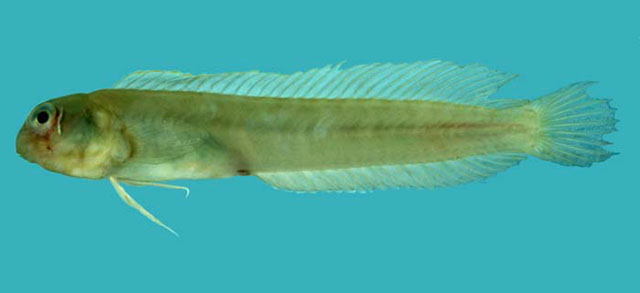| Blenniidae (Combtooth blennies), subfamily: Blenniinae |
| 6 cm SL (male/unsexed) |
|
benthopelagic |
| Africa and Asia: brackish waters of Lake Poelela and Delagoa Bay (South Africa) to India, Sri Lanka, New Guinea and the Philippines. Reported from the Ryukyu Islands (Ref. 559). |
|
Dorsal spines (total): 11-13; Dorsal soft rays (total): 20-23; Anal spines: 2-2; Anal soft rays: 22-26. head without cirri; lower end of gill opening usually opposite 4th or 5th pectoral fin ray; sensory pores in infraorbital an interorbital canals mostly 8 and 3 respectively; lateral line tubes 1 to 4 (Ref. 559). A good diagnostic characteristic is a short diagonal line found just behind the eye (Ref. 44091). |
| Adults are found in mangrove swamps and river estuaries, but more often in freshwater lakes (Ref. 4404, 58302). Benthic (Ref. 58302). The size and shape of the mouth, the presence of large canine teeth suggest that this fish is probably a predator on small aquatic animals (Ref. 44091). Oviparous. Eggs are demersal and adhesive (Ref. 205), and are attached to the substrate via a filamentous, adhesive pad or pedestal (Ref. 94114). Larvae are planktonic, often found in shallow, coastal waters (Ref. 94114). |
|
(Ref. 96402)
|
| harmless |
|
Source and more info: www.fishbase.org. For personal, classroom, and other internal use only. Not for publication.
Page created by Jen, 05.08.02,
php script by kbanasihan 06/09/2010 ,
last modified by
dsantos, 20/08/10

